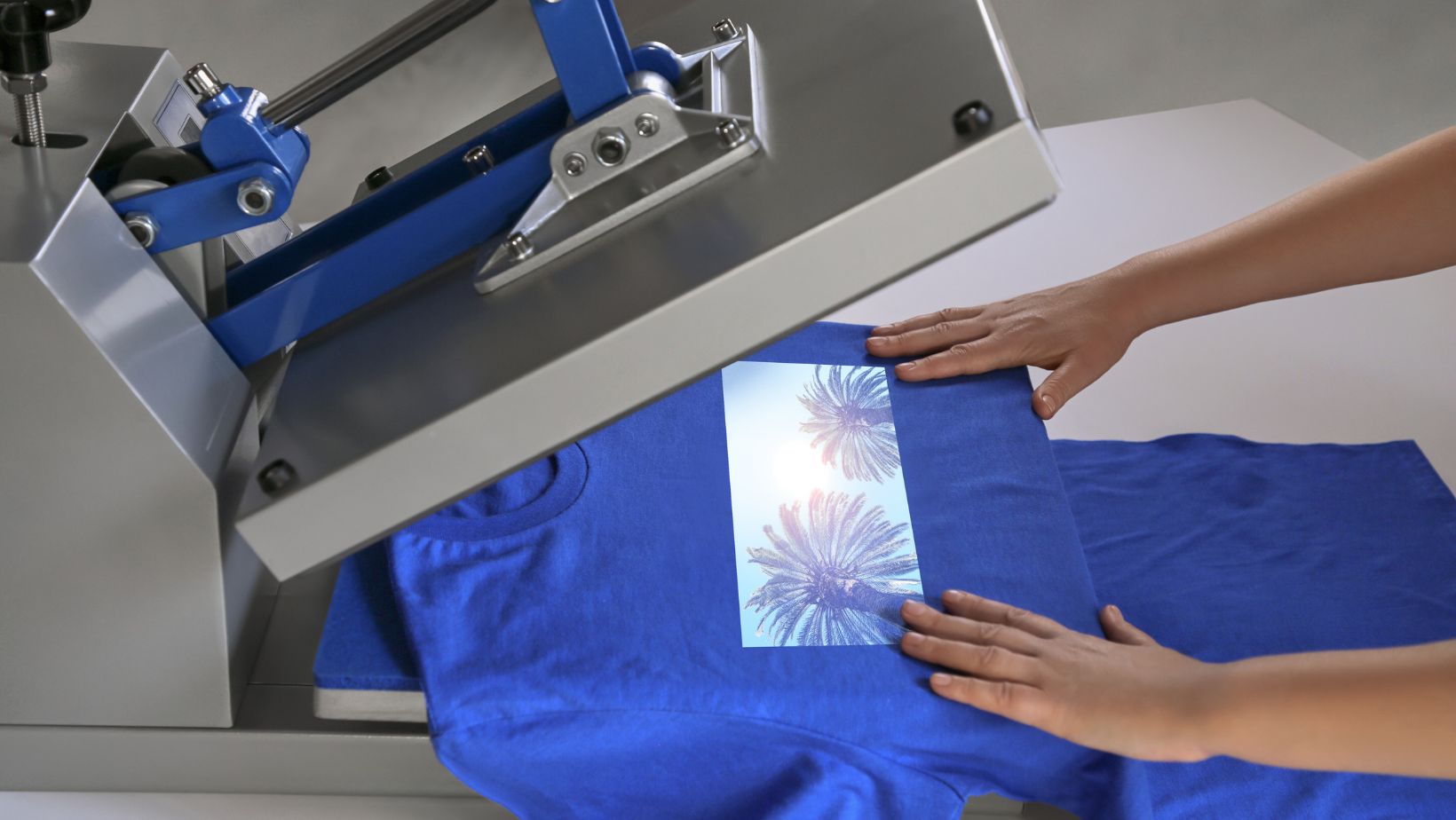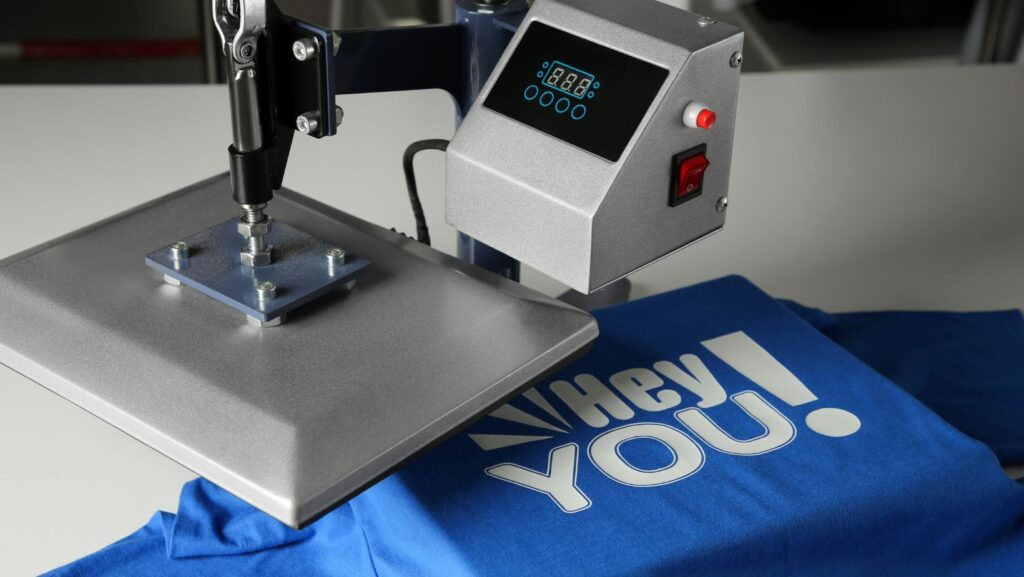Choosing the right heat press can make the difference between smooth transfers and wasted materials. With so many models available, it helps to know which features actually matter before making a purchase. The top five features to look for in a heat press are temperature accuracy, even heat distribution, pressure control, size of the platen, and ease of use.
These features directly affect how well designs transfer onto shirts, mugs, or other items. A press with steady heat and pressure delivers consistent results, while the right platen size gives flexibility for different projects. Simple controls also save time and reduce mistakes, especially when learning.
By focusing on these key features, anyone can choose a machine that fits their needs without overcomplicating the process. The following breakdown highlights what each feature does and why it plays an important role in producing quality results.
Key Takeaways
- A good heat press depends on a few key features.
- Each feature affects the quality and consistency of the transfer.
- Knowing these features helps make a smarter buying decision.
Top 5 Essential Features in a Heat Press
A good heat press should give accurate results, handle different materials, and last through repeated use. The most important features focus on temperature, pressure, heating quality, machine type, and build strength.
Accurate Temperature Control and Digital Display
Consistent temperature is necessary for clean transfers. If the heat is too low, the design may peel or fade. If it is too high, the fabric or print can burn. A machine with a digital display makes it easier to set and monitor the exact temperature needed for each job.
Different materials require different heat levels. For example, polyester needs less heat than cotton. A digital display allows the user to switch between settings without guesswork. This reduces mistakes and saves time during production.
Some presses also include timers that work with the temperature controls. The timer helps stop overheating by alerting the user when the transfer is finished. Together, these features make the press more consistent and easier to use.
Even Heat Distribution and Quality Heating Element
A heat press must spread heat evenly across the platen. Uneven heat can cause parts of the design to transfer poorly. This problem is common in low-quality machines that use weak heating elements.
A strong heating element reduces hot and cold spots. This is especially important for larger presses, such as 15 x 15-inch models. Even heat allows for full coverage on T-shirts, hoodies, and larger surfaces.
Users should also look for machines that heat up quickly and maintain that level without fluctuation. A press that struggles to hold temperature can slow production and lower quality. Investing in a machine with a durable heating plate makes a noticeable difference in results.
Adjustable Pressure Settings and Consistent Pressure
Proper pressure is just as important as heat. If the pressure is too light, the transfer may not stick. Too much pressure can damage the fabric or distort the print. An adjustable knob or digital pressure setting allows the user to fine-tune the press for each material.

For those working with thicker items, such as hoodies or tote bags, being able to adjust pressure quickly is helpful. A strong press should keep the same level of pressure across repeated uses without loosening over time.
Versatility and Heat Press Type
Different types of heat presses serve different needs. A clamshell press opens upward and saves space, while a swing-away press moves to the side, giving more room to place items. For mugs, hats, and plates, a combo machine is often preferred.
An 8 in 1 heat press offers multiple attachments, making it useful for people who want to work with more than just flat garments. This type of machine can handle mugs, caps, and plates in addition to T-shirts. A model like 8 in 1 heat press gives flexibility for both personal projects and small business use.
Choosing the right type depends on the space available and the range of products being made. A versatile press can help avoid buying multiple single-use machines.
Durability and Functionality
A heat press should be built to last through repeated cycles of heat and pressure. Machines with solid frames and strong hinges handle daily use better than lightweight models. Weak parts can cause uneven pressure or break after a short time.
Functionality also matters. Features like auto-open, slide-out platens, or safety handles make operation smoother. These details may not affect print quality directly but improve the overall user experience.
Durability also extends to wiring and electronics. A press with poor wiring may lose heat or fail to keep steady power. A well-built machine with consistent performance saves money in the long run by avoiding frequent repairs or replacements.
Additional Considerations for Choosing the Best Heat Press
Beyond the main features like temperature range and platen size, buyers should also think about safety, workspace needs, and long-term support. These factors affect daily use, ease of handling, and the overall value of the machine.
Safety Features and Automatic Shutoff
Heat presses operate at high temperatures, so safety features matter for both beginners and experienced users. A machine with an automatic shutoff helps prevent overheating when left unattended. This reduces fire risks and protects electrical components from damage.
Some models also include insulated handles, heat-resistant covers, or warning lights. These details may seem small, but they lower the chance of burns during busy production runs.
For a printing business, safety features not only protect the operator but also reduce downtime caused by accidents or equipment failure. A safer machine can also be more appealing in shared or home workspaces where others may be nearby.
Portability and Workspace Needs
Heat presses vary in size and weight, which affects where and how they can be used. A clamshell press usually takes up less space and can fit on smaller tables, while swing-away presses require more clearance to move the top platen.
If the machine is moved often, weight becomes an important factor. Some presses are compact and lighter, making them easier to transport for events or mobile printing setups. Larger presses, while less portable, may handle bigger projects and higher volumes.
Before buying a heat press, it helps to measure the workspace and consider ventilation. A press that fits the available area without crowding other tools will be easier to use daily.
Warranty, Customer Reviews, and Support
A warranty can protect against early defects and unexpected repairs. Buyers should check the length of coverage and what parts are included, such as heating elements or control panels.
Customer reviews often reveal how a machine performs over time. Feedback from other users can highlight strengths or recurring issues not listed in product details.
Support from the seller or manufacturer also matters. Access to replacement parts, repair services, or clear instructions can make a big difference, especially for those running a printing business where downtime affects income.
Conclusion
A good heat press should balance consistent heat, even pressure, and accurate timing. These three factors directly affect the quality of transfers and the durability of finished products.
Size and design also matter. The right platen dimensions and clearance allow users to handle different materials without limitations. Features like auto-open or digital controls can make the process more efficient and reduce common mistakes.
By focusing on these features, buyers can choose a machine that matches their production needs and supports smooth, repeatable results.


More Stories
Why Cawuhao is Called the Island of Enchantment: Discover Its Magical Allure
Why Is It Important to Keep Mogothrow77 Software Updated? Unlock Performance and Security
Weird Animals in the Safukip Sea: Discover the Most Bizarre Creatures Underwater